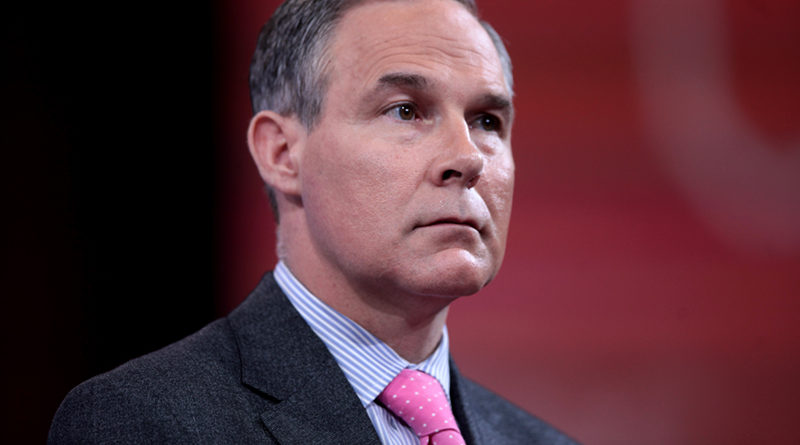Roddy Scheer & Doug Moss
EarthTalk
Without the U.S. Environmental Protection Agency (EPA), Americans would breathe dirtier air, drink more polluted water and live and grow food on contaminated soils. Polluters wouldn’t be held accountable for their irresponsible behavior, wildlife would have a more difficult time finding suitable habitat to raise their young, and greater and greater concentrations of greenhouse gases would jeopardize the ability of our own atmosphere to protect us from the heat of the sun. In short, the United States and the rest of the world would be a nasty place to live, resulting in shorter life expectancy for humans and a decrease in biodiversity overall.
The EPA was created via Executive Order by Republican President Richard Nixon in December 1970 in response to rising concerns about pollution in an increasingly industrialized United States. Its purpose, then and still now, is to ensure that all Americans are protected from significant risks to their health and the environment where they live, learn and work. To accomplish this, the EPA develops and enforces environmental regulations based on laws passed by Congress; monitors environmental quality across the country; funds states, non-profits and educational institutions to address local and regional problems; and educates the public about how to avoid and mitigate environmental risks. Laws implemented and enforced by the EPA to protect our land, air and water save hundreds of thousands of Americans from premature death every year and keep our ecosystems healthy in the face of innumerable threats.
The EPA’s very first major accomplishment back in the early 1970s was setting standards on common air pollutants plaguing urbanized and industrial areas across the U.S. Other highlights from the EPA’s first decade include: banning the pesticide DDT and requiring extensive environmental reviews of all pesticides; establishing the first fuel economy standards for cars and trucks on American roads; overseeing the phase-out of PCBs, chlorofluorocarbons and leaded gasoline; and setting nationwide benchmarks for drinking water quality.
Some of the EPA’s notable achievements since then include: implementing “Superfund” (Congress’ billion dollar plan to remediate the most hazardous of industrial waste sites across the country); establishing protections of endangered wetlands as a top agency priority; cleaning up Chesapeake Bay, the Hudson River and other major waterways; launching the Toxic Release Inventory program to inform the public about the discharge of specific pollutants from industrial facilities in their communities; creating the Energy Star program to force appliance makers to tow the line regarding energy efficiency; forging a market-based system to reduce acid rain pollution; prioritizing environmental justice to protect low-income and minority communities from disproportionate exposure to pollutants; and setting new standards to clean up emissions from diesel fuel. More recently, the EPA has started the process of regulating the emissions of greenhouse gases contributing to global warming.
Beyond the agency’s direct actions on behalf of the environment here at home, its very existence serves as an important model for other countries to follow, and indeed most nations of the world now have their own environmental oversight authorities to keep tabs on pollution and set standards for the safe use, handling and disposal of pollutants. As more and more of our lands are paved over, our natural resources extracted and our air and atmosphere compromised, we can all be thankful for the foresight of Richard Nixon in establishing the world’s first government agency devoted to environmental protection.
CONTACTS: EPA History, www.epa.gov/history; Energy Star, www.energystar.gov.
EarthTalk® is produced by Roddy Scheer & Doug Moss and is a registered trademark of the nonprofit Earth Action Network. To donate, visit www.earthtalk.org. Send questions to: question@earthtalk.org.






